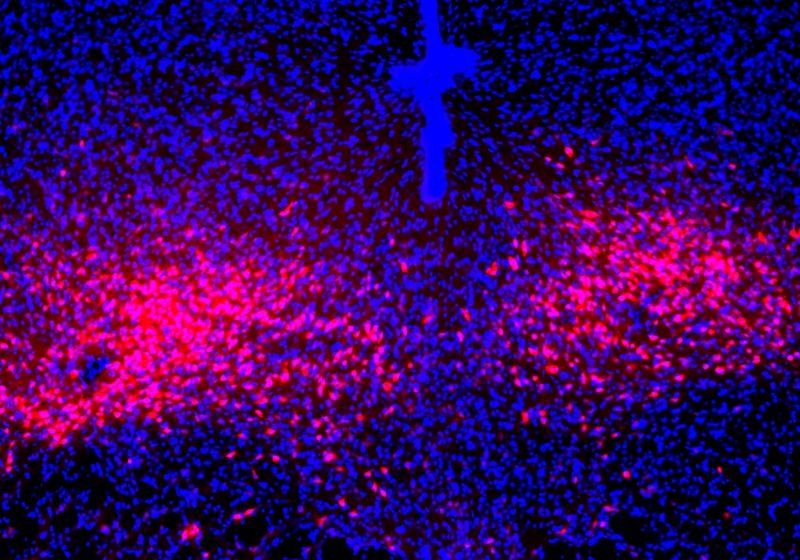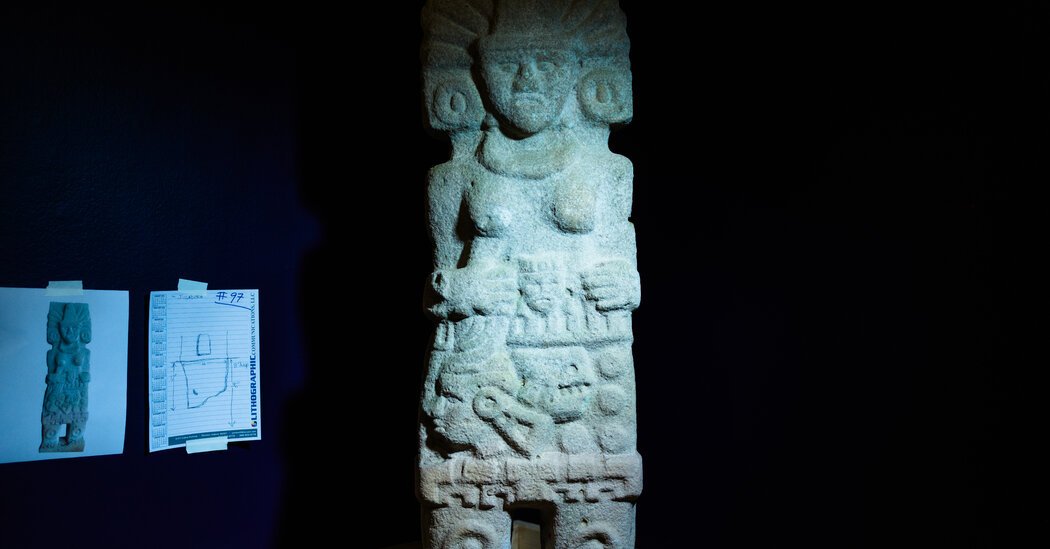Every year, about 11 percent of Americans experience the heart-pounding, nauseating sensations of intense fear that characterize a panic attack.1 While some treatments for panic disorder exist, including benzodiazepines and psychotherapy, an incomplete understanding of the differences between anxiety, fear, and panic, and the neurobiology underlying these emotional states precludes the development of more targeted therapies.
Now, neuroscientist Sung Han and his research team at the Salk Institute for Biological Studies have discovered a new panicogenic pathway nestled deep within the brain.2 Exploring strategies to suppress the activity of this pathway with pharmaceutical or behavioral interventions may aid in the development of new therapies for patients struggling with panic disorder.
“One of the things that’s exciting about this paper was the tools and the technology [they used]. It was pretty incredible in terms of what they were able to do to identify very specific circuitry in the brain,” said Sayamwong Hammack, a neurobiologist at the University of Vermont who was not involved in the study. “They really have identified a new circuit that I didn’t know about before.”
While a small, almond-shaped lump of tissue called the amygdala is most commonly associated with the fear response, Han said that the neurocircuitry of fear stretches well beyond a single structure. This more nuanced understanding of the brain’s fear machinery was highlighted by a pair of studies in the 2010s on subjects with bilateral amygdala damage. These individuals did not feel fearful when exposed to a variety of external threats, including live snakes, haunted houses, or scary film clips.3 However, researchers were surprised to discover that the participants did feel fear, and even experienced panic attacks, in response to interoceptive threats, which involve perturbations of the body’s internal state.4,5 Thus, some kinds of fear seemed to require the amygdala, while other kinds did not.

In the studies of patients with amygdala damage, researchers used carbon dioxide (CO2) inhalation, which raises blood CO2, to signal danger via the body’s internal state. This CO2-evoked fear state has previously been linked to panic disorder. While naturally-occurring panic attacks aren’t generally triggered by high blood CO2, researchers believe that there are likely similarities in the underlying mechanisms, as people with panic disorder are hypersensitive to CO2 compared to control groups and those with other mood disorders.6,7 Researchers began to wonder if panic disorder might be driven by neural pathways that were not reliant on amygdala activity.
Sukjae Kang (left) and Sung Han (right), neuroscientists at the Salk Institute for Biological Studies, explored the neural circuits responsible for panic-like behaviors.
Salk Institute
Subsequently, said Han, “People started to think that maybe panic disorder might be different from conventional anxiety disorders.” Indeed, while both generalized anxiety disorder and panic disorder are characterized by excessive worry, panic disorder also involves short periods of intense fear accompanied by physiological symptoms like sweating, nausea, dizziness, and shortness of breath. However, Han said, the neural mechanisms underlying these differences had not been identified.
Hammack similarly noted that the differences between anxiety, fear, and panic are still a matter of some debate in the field. “This is a conversation that I have in my lab meeting almost every week; exactly what those things are is not super clear,” he said.
If the amygdala wasn’t crucial for panic, what other brain structure might drive this behavior? Han reasoned that the lateral parabrachial nucleus (PBL) was a promising candidate. This brainstem region plays an important role in fear responses and is activated by panic-inducing drugs.8,9
The PBL contains many neurons that produce pituitary adenylate cyclase-activating polypeptide (PACAP), a signalling peptide that also mediates fear responses.10,11 Using fluorescent labeling, the researchers mapped two different populations of PACAP-expressing PBL neurons; one group projected to the amygdala, while the other group projected to another brainstem region called the dorsal raphe (DR). Since they already knew that panic did not require the amygdala, they chose to explore the second group of neurons, which they dubbed PACAPPBL→DR neurons.
When researchers exposed mice to conditions that evoke panic in humans—either CO2 or a drug called FG-7142—PACAPPBL→DR neurons lit up with activity. Physiologically, the mouse version of panic also involved immobility and increased breathing rate. When mice were conditioned to associate a tone with a foot shock—often considered as an animal model of fear or anxiety—the activity of these neurons actually decreased, suggesting that different neuronal populations respond to these two different types of stimuli.
Next, researchers demonstrated that optogenetically activating these neurons produced panic-like behaviors, while chemogenetic inhibition reduced panic, even in the face of CO2 inhalation. They further confirmed the importance of this pathway by manipulating the DR neurons that received input from the PACAP-producing neurons. Chemogenetic inhibition of these neurons or direct pharmacological blockade of their PACAP receptors also reduced panic responses. Defining this panicogenic pathway and its relevant signaling molecules points toward potential therapeutic targets for panic disorder.
“This [study] provided not just a new circuit, but also some places that the panic circuit could interact with some of the fear and anxiety [circuits],” said Hammack.
Han is eager to continue exploring the relationships between these different brain circuits. “In the study, we showed that PACAP neurons in the lateral parabrachial nucleus extensively receive inhibitory input from the central nucleus of the amygdala,” said Han. “So, our next question [focuses on] that inhibitory input to the parabrachial PACAP neurons. How does that circuit contribute to panicogenesis?”
In particular, he wants to determine whether stimuli that activate the central nucleus of the amygdala can suppress the activity of the PACAP neurons in the PBL, exploring the hypothesis that fear may suppress panic. While this is still speculative, Han said that this could potentially inform the development of new behavioral therapies. If a mildly aversive stimulus, like a small shock or scary image, could curb panic attacks, this may benefit individuals with panic disorder.
References
- Kessler RC et al. The Epidemiology of Panic Attacks, Panic Disorder, and Agoraphobia in the National Comorbidity Survey Replication. Arch. Gen. Psychiatry. 2006;63(4):415-424.
- Kang SJ et al. A pontomesencephalic PACAPergic pathway underlying panic-like behavioral and somatic symptoms in mice. Nat Neurosci. 2024;27(1):90-101.
- Feinstein JS et al. The human amygdala and the induction and experience of fear. Curr Biol. 2011;21(1):34-38.
- Feinstein JS et al. Fear and panic in humans with bilateral amygdala damage. Nat Neurosci. 2013;16(3):270-272.
- Khalsa SS et al. Panic Anxiety in Humans with Bilateral Amygdala Lesions: Pharmacological Induction via Cardiorespiratory Interoceptive Pathways. J Neurosci. 2016;36(12):3559-3566.
- Perna G et al. 35% CO2 challenge in panic and mood disorders. Journal of Affective Disorders. 1995;33(3):189-194.
- Gorman JM et al. Physiological Changes During Carbon Dioxide Inhalation in Patients With Panic Disorder, Major Depression, and Premenstrual Dysphoric Disorder: Evidence for a Central Fear Mechanism. Arch. Gen. Psychiatry. 2001;58(2):125-131.
- Jaramillo AA et al. Danger and distress: Parabrachial-extended amygdala circuits. Neuropharmacology. 2021;198:108757.
- Singewald N, Sharp T. Neuroanatomical targets of anxiogenic drugs in the hindbrain as revealed by Fos immunocytochemistry. Neuroscience. 2000;98(4):759-770.
- Velasco ER et al. PACAP-PAC1R modulates fear extinction via the ventromedial hypothalamus. Nat Commun. 2022;13:4374.
- Stevens JS et al. PACAP receptor gene polymorphism impacts fear responses in the amygdala and hippocampus. Proc Natl Acad Sci U S A. 2014;111(8):3158-3163.










